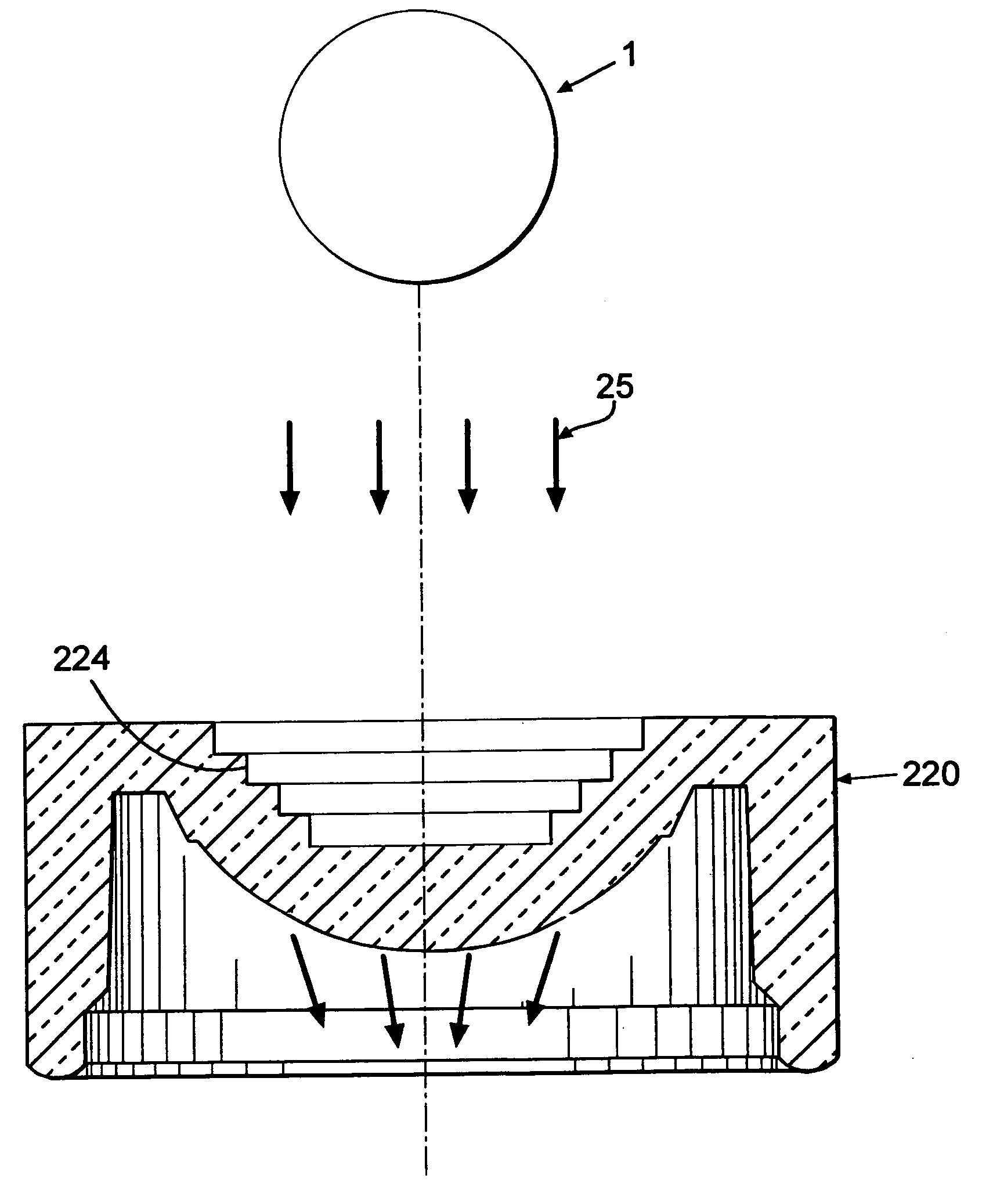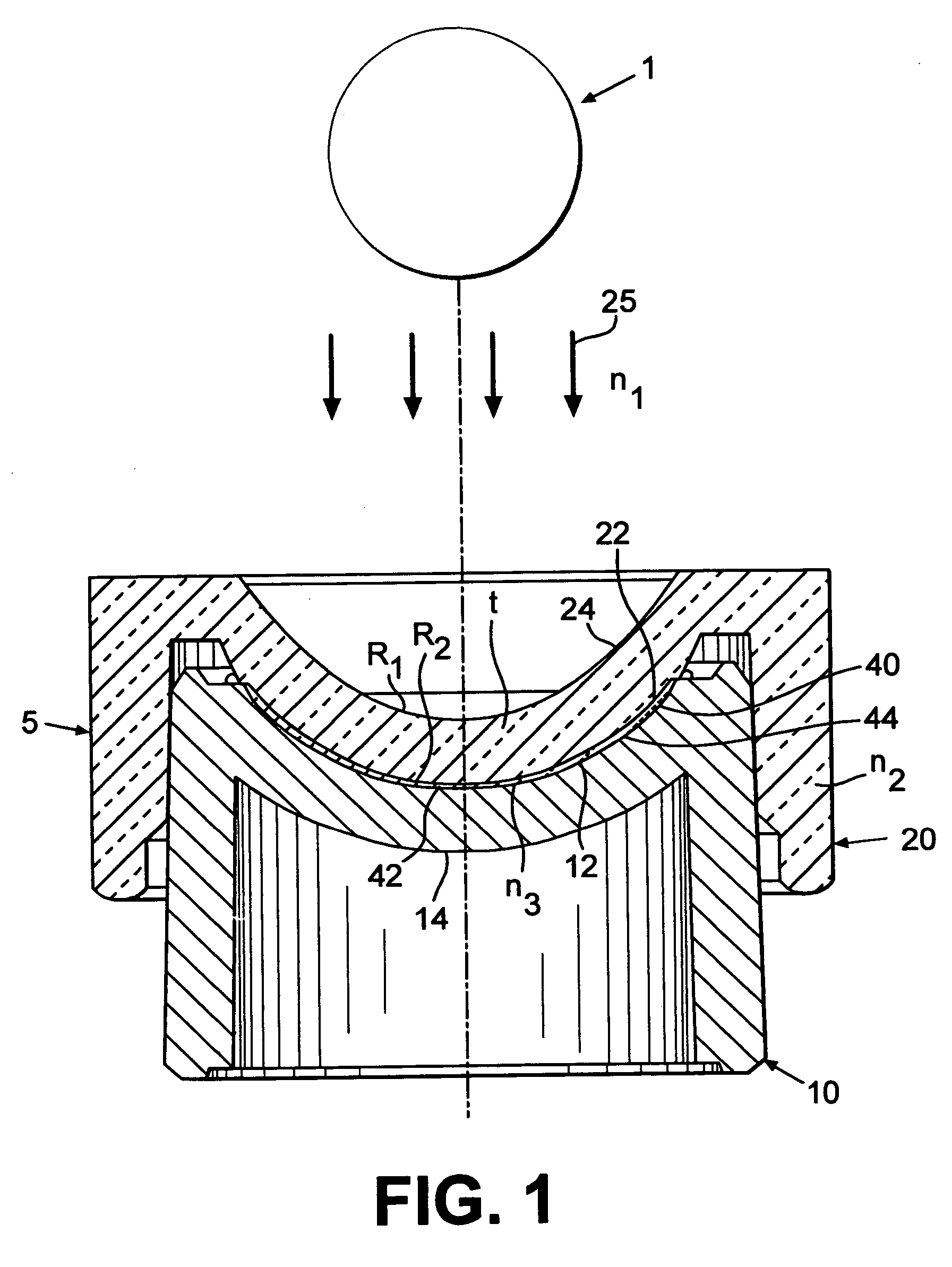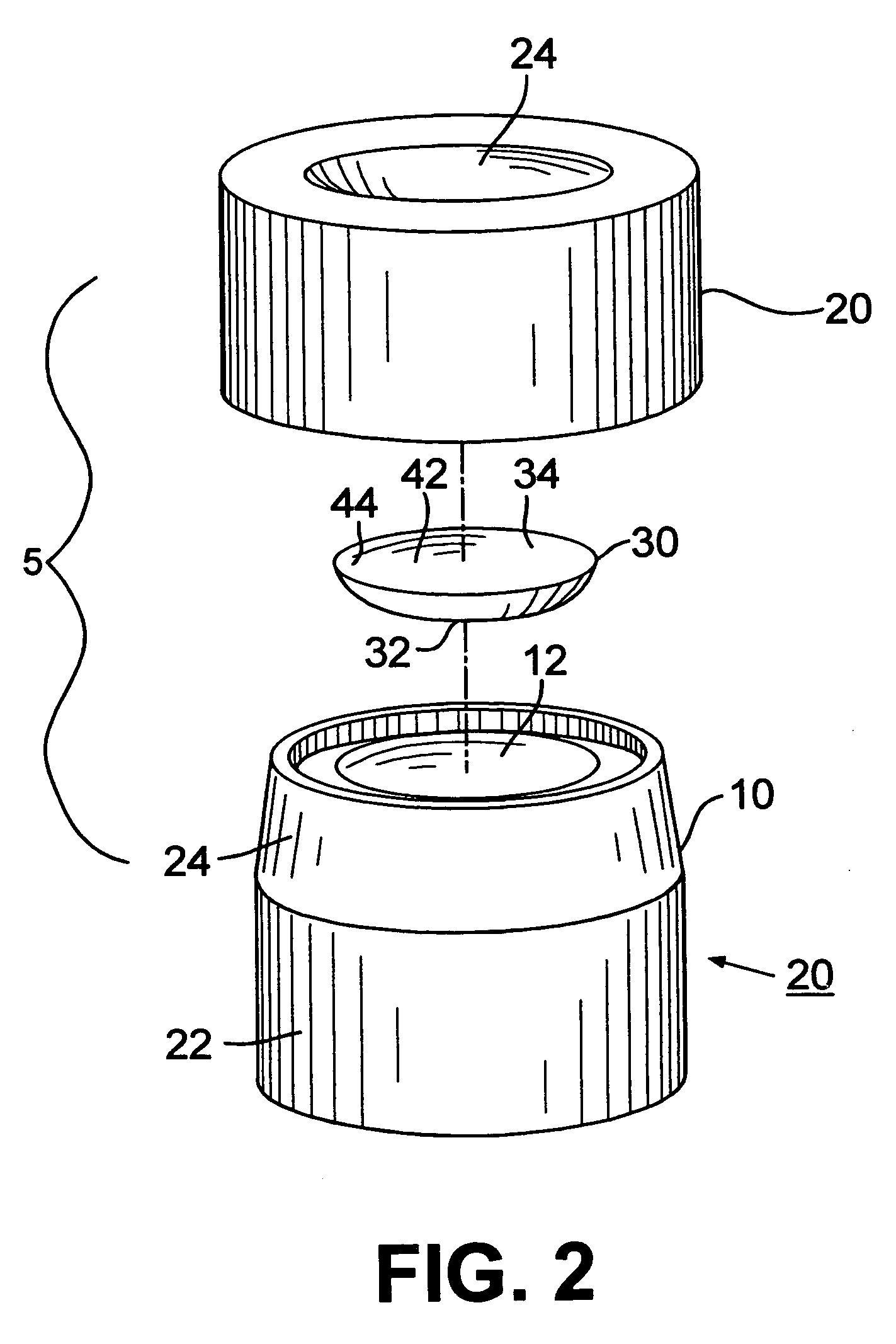Method and mold to control optical device polymerization
a technology of optical devices and polymerization, which is applied in the direction of foundry moulding apparatus, instruments, foundry patterns, etc., can solve the problems of uniform curing rate of ultraviolet polymerizable materials including resins, scattering of light rays, and non-uniform distribution of light intensity over lens-forming materials, so as to reduce the amount of energy available, remove any residual stress, and reduce the effect of unwanted stress
- Summary
- Abstract
- Description
- Claims
- Application Information
AI Technical Summary
Benefits of technology
Problems solved by technology
Method used
Image
Examples
example 1
[0045]A series of HEMA lenses were cast according to conventional methods with the posterior mold portions prepared from an amorphous resin. Two sets of posterior mold portions had fresnel geometry cut into the non-critical surface with resulting hydrated lens powers of −6 D and −2 D. Two sets of posterior mold portions (also yielding hydrated lens powers of −2 D and −6 D) had controlled geometry (no junctions) and served as controls. After casting, the lenses were hydrated and parameters were measured.
[0046]
TABLE 1Posterior MoldSAG (mm)-2D Control3.581-2D Fresnel3.581-6D Control3.382-6D Fresnel3.420
[0047]The −6 D lenses made with the control molds failed to meet sag requirements because of dimpling / warpage. The −6 D lenses made with the Fresnel molds met the sag specification and did not have dimples. Other lens parameter requirements, although not listed, were also met by the −6 D lenses made with the Fresnel molds.
PUM
| Property | Measurement | Unit |
|---|---|---|
| Distance | aaaaa | aaaaa |
Abstract
Description
Claims
Application Information
 Login to View More
Login to View More - R&D
- Intellectual Property
- Life Sciences
- Materials
- Tech Scout
- Unparalleled Data Quality
- Higher Quality Content
- 60% Fewer Hallucinations
Browse by: Latest US Patents, China's latest patents, Technical Efficacy Thesaurus, Application Domain, Technology Topic, Popular Technical Reports.
© 2025 PatSnap. All rights reserved.Legal|Privacy policy|Modern Slavery Act Transparency Statement|Sitemap|About US| Contact US: help@patsnap.com



